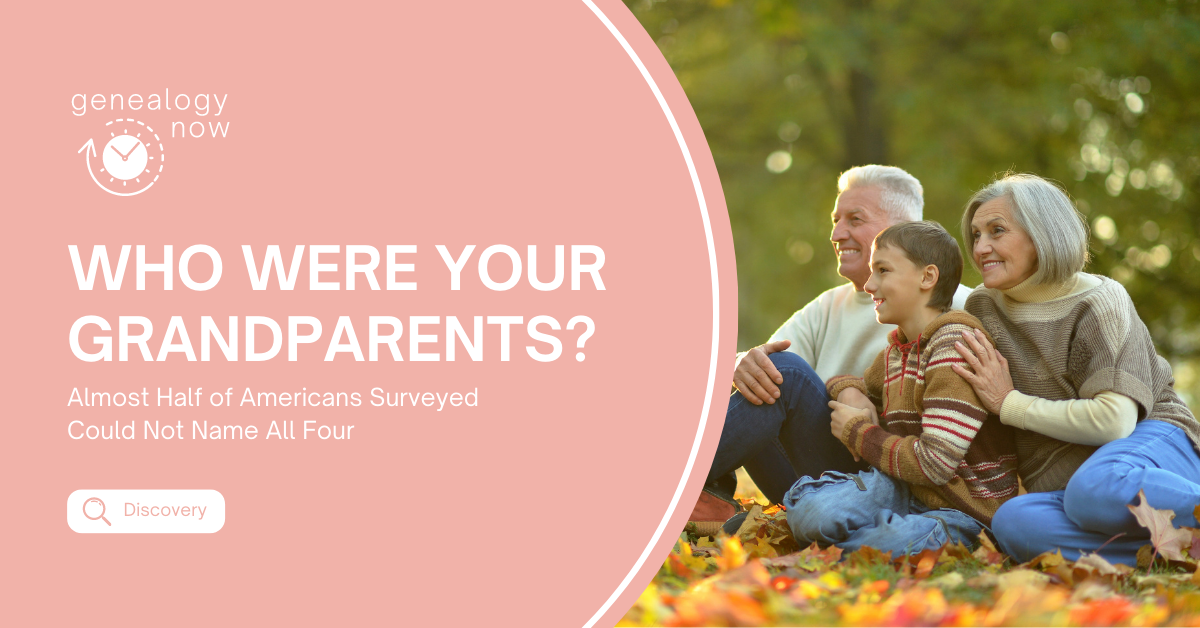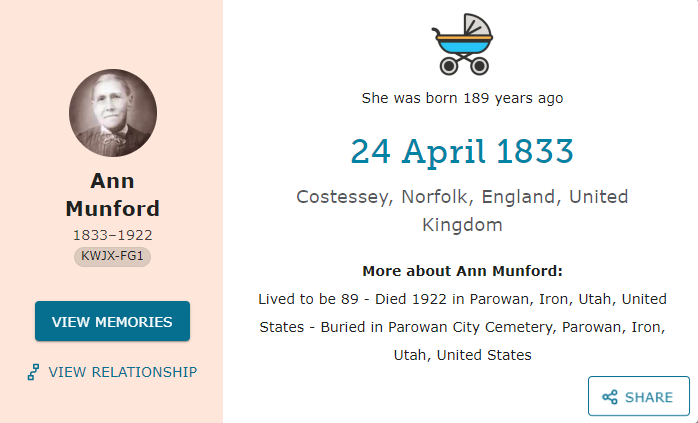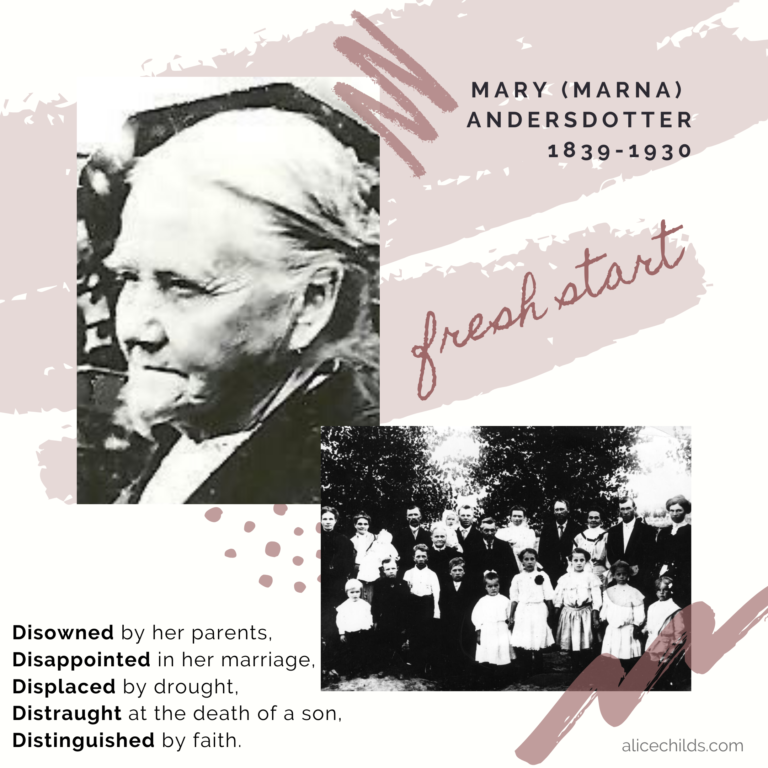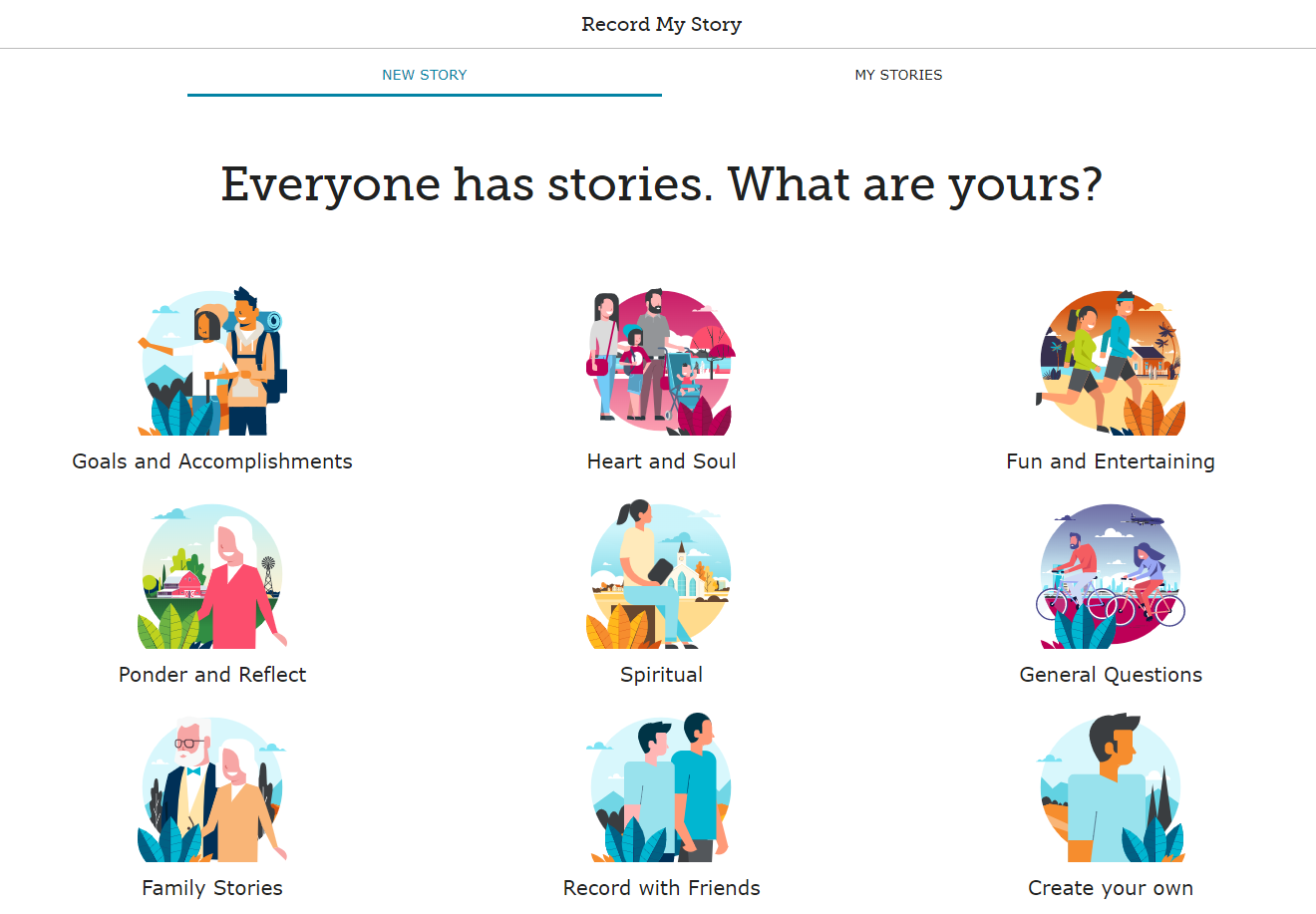
I read something that was a little disconcerting this week. In a study conducted by OnePoll on behalf of Ancestry, a survey of individuals in key cities across the United States revealed that only 47 percent of respondents could correctly name all four of their grandparents, and only four percent could correctly name all eight of their great-grandparents. These findings stab at this genealogist’s heart, especially painful in light of findings from the Family Narratives Lab that show that “Adolescents who know more family history show higher self-esteem, lower levels of behavior problems, such as withdrawal and aggression, higher sense of self-efficacy, and a more differentiated sense of self.”
The good news? Respondents in the OnePoll study expressed interest in learning more about their family history, especially wanting to know stories about when their ancestors were young and what they were like at the time. This is where we come in.
Connecting with our ancestors can change our lives in surprising ways. From their trials and accomplishments, we gain faith and strength.16 From their love and sacrifices, we learn to forgive and move forward. Our children become resilient. We gain protection and power. Ties with ancestors increase family closeness, gratitude, miracles. Such ties can bring help from the other side of the veil.
Gerritt W. Gong, “We Each Have a Story,” April 2022 General Conference (https://www.churchofjesuschrist.org/).
Tell Your Family Stories
When you’re passionate about genealogy, it’s easy to learn the stories of our ancestors. We spend hours hunting down documents, learning about social and historical context, creating family trees, and breaking down brick walls. But are we sharing what we learn in a way that our children and grandchildren can digest? From personal experience, I can tell you that non-genealogists aren’t really interested in pedigree charts and documentation. What they want are stories. How can we share? Here are a few ideas:
Find Opportune Moments to Share Stories
Look for opportune moments to share relateable stories centered on character traits or obstacles that our ancestors have overcome. A couple of years ago I asked my parents and in-laws to tell me some of their memories about themselves and their parents focused on these two ideas. Since then, I have found moments to share how grandparents and great-grandparents have overcome paralyzing shyness, debilitating depression, the loss of an infant child, health challenges, and financial difficulties with my family. These moments have been times when a family member might have been struggling with similar challenges. I have pointed out how particular character traits I notice in family members have been inherited from their grandparents and great-grandparents. This exercise alone has strengthened the connection between generations in our family, but that’s not the only way to foster connection.
A Picture is Worth a Thousand Words
I really wanted to make sure my children could envision their parents and grandparents as young people. One of my children calls my paternal grandfather the “Up” grandpa because Grandpa Sanders reminds him of Carl Fredricksen from the Disney movie. I loved being able to highlight a photo of Grandpa as a young man. Everyone in the family has commented on the family resemblance between young Grandpa and my nephew. I made copies of these photo collages with the stories printed on the back and gave the cards to my siblings so they could use them to tell stories to their children too.

Celebrate Ancestor Birthdays
FamilySearch has a Calendar of Ancestral Moments that you can subscribe to. When you receive an email notification, you can then share to social media directly from the calendar. This is a great way to expose extended family members to the names of all of their ancestors. Here’s the upcoming notification for my 3x great-grandmother Ann Munford. I could also include my own personalized note with the post: “She was a school teacher in Parowan. You can see her school bell in the Rock Church Museum there.”

For ancestors that you knew, consider making one of their signature recipes or sharing their favorite treat with your family on their birthday.
Create Digestible Social Media Posts
Speaking of sharing on social media, another way to share is with a visual photo accompanied by a brief story. Digestible is the key word here. I created this visual using Canva, a free online design and publishing tool. People may not stop to read a long post, but perhaps they will look at a picture that tells a story. I might simply write, “My 2nd great-grandmother Mary Andersdotter had a tragic childhood in Sweden, followed by further tragedy in her young married life. She emigrated to Utah with other Scandinavian saints. Her faith inspires me.” You can then provide a link to the ancestor’s FamilySearch profile page or a longer story or article posted about them online in case anyone wants to learn more.

Use FamilySearch Tools to Capture Stories and Photos
One of the best ways to capture information about our ancestors is to use the free tools provided by FamilySearch. Don’t keep all your family history information to yourself! Add stories and memories to ancestor profile pages. A relatively new tool that I love is called Record My Story. Take the time to answer the prompts about yourself and save them for posterity. Encourage living parents to do the same. Finally, complete the circle by inviting your children to record their own stories using the same prompts. The stories will be saved to each person’s FamilySearch profile under Memories. (Remember, memories attached to living persons won’t be accessible until after they are deceased).

Be Creative!
Let’s not allow our children and grandchildren to be among those who don’t know the names of their parents and grandparents! These are just a few ideas for how you can help your family members become acquainted with their ancestors. With a spark of intention and a touch of creativity, you can create a network of connection across generations.
For more ideas about how to help yourself and others learn more about your grandparents and great-grandparents, you might enjoy the resources provided by the 21-Day Family Connections Experiment. The people there are doing great work!

Thank you, Alice, it’s great to learn about the research about the benefits of knowing your family stories! Very much appreciate the links and tips here — I’ll be using those FamilySearch features now.